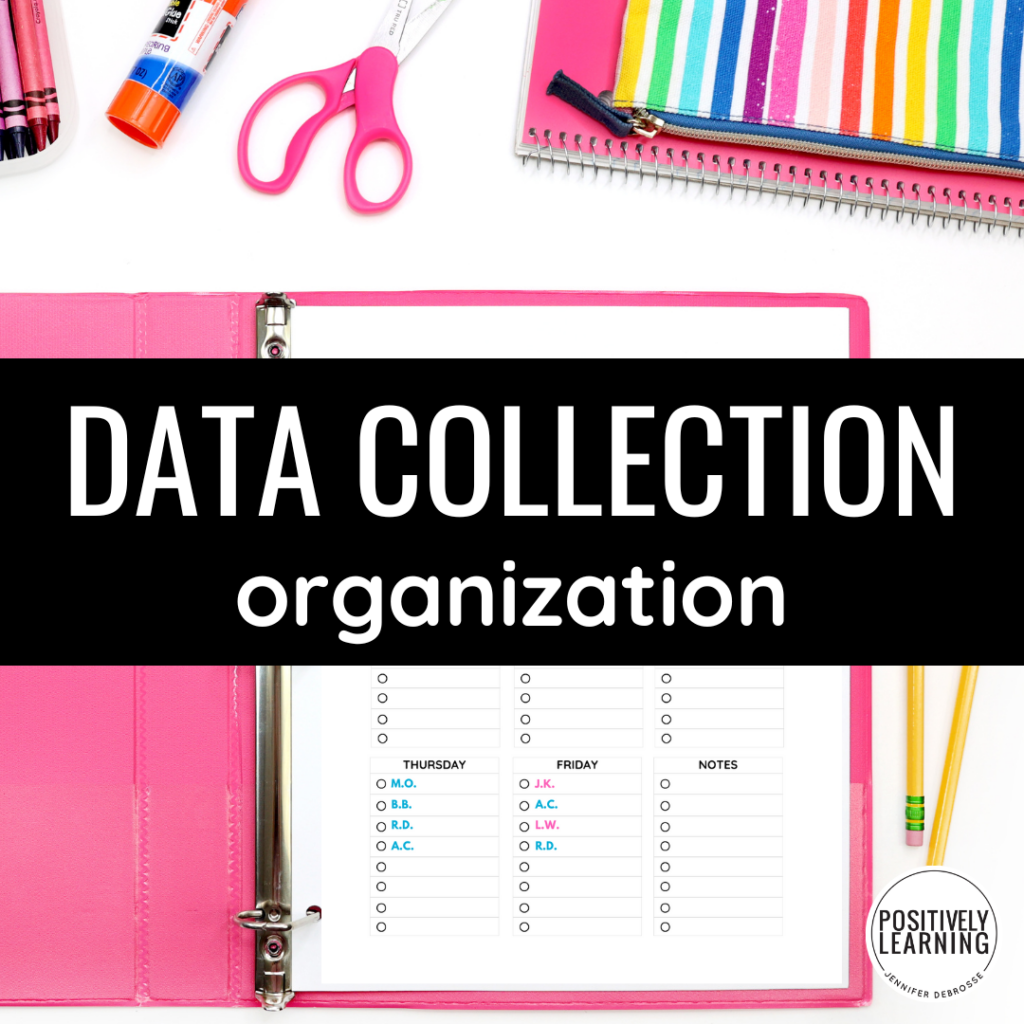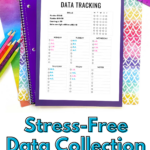
As a special education teacher, you're constantly juggling various responsibilities, one of which is efficiently organizing and managing data collection. Finding a streamlined data collection process can not only help your students get the customized learning that will help them grow, it will save YOU time.

Table of Contents
ToggleThere are SO many methods of data collection out there, so why does this remain a tricky task? The two main issues that seem to come up is not finding time to collect student data during the busy school week OR collecting way too MUCH data which leads to major overwhelm!
Here are a few suggestions to try out in order to develop your own data tracking practice!
Before diving into data collection sheets, it’s important to identify the type of data you need. Are you looking for qualitative insights (i.e.: anecdotal notes; observations) or quantitative numbers (student performance; test scores)? Think about the IEP goals, academic skills, and long-term progress of your students. This initial step will guide you in choosing the right data collection methods and tools.
A well-organized data binder or digital tools like Google Sheets, Google Docs, and Google Drive are lifesavers. They not only help in storing data files and data sheets efficiently but also ensure that your data is accessible anytime, anywhere. Sharing relevant data with general educators? An organized method of data collection is a good place to start!
There are so many data collection techniques and you want to find one that matches your busy day. I personally LOVE having that “just right” data collecton sheet organized in binders, however often there's no time for flipping pages. Instead, I usually choose my go-to favorites and stack them on a clipboard so they are always ready to grab and go. You might also want to experiment with sticky notes for quick observations or a complete package of reproducible forms for detailed records. The key is to find what works best for you and your students.
Once you have tried out different methods of data collection, you'll quickly notice which pages you reach for over and over again. The next essential step is to gather these tools into an ultra-practical resource: a toolkit. This Data Collection Toolkit should include a variety of data collection sheets, pens or pencils, student incentives (like a stamp or sticker, if age appropriate), and timers. Creating a personalized toolkit is a great way to make sure data is collected without constantly searching your classroom for the right tools.
Check out these excellent tools designed for a more streamlined and effective approach to data collection:
The goal of organizing your special education data tracking make your job easier and stress-free, at least as far as accurate data collection goes . By choosing the right tools and methods and staying open to new ideas (a.k,a, – if it's not working, try a new form!) you can turn data collection from a dreaded task to an effective way to guide your instruction.

I’m Jennifer and I was a special educator in the elementary school setting over the past decade. I entered the classroom every day dedicated to making learning inclusive AND engaging.














This website uses cookies to ensure you get the best experience on our website. See full disclosure here.
This website uses cookies to ensure you get the best experience on our website.
See full disclosure here.